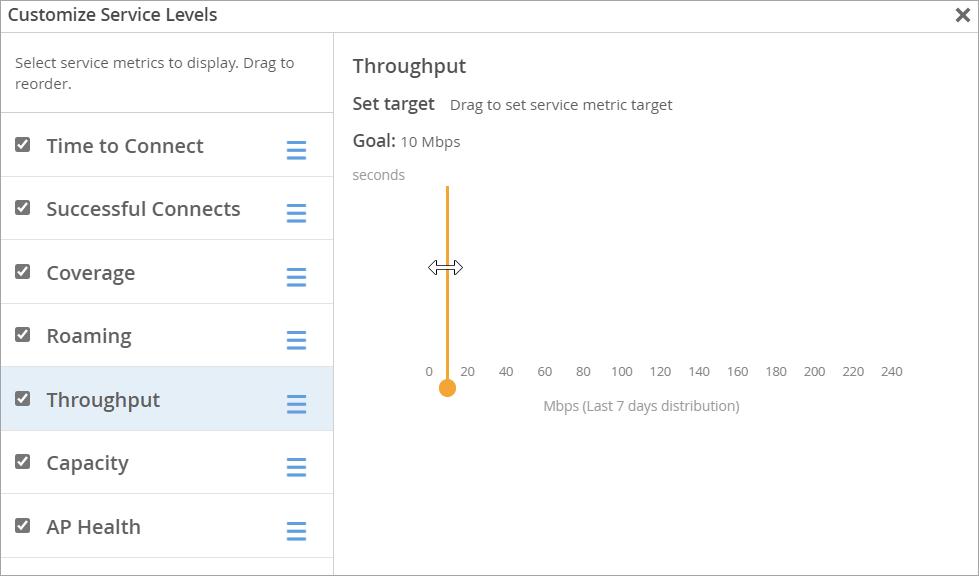- play_arrow Get Started with AI Ops
- play_arrow Insights
- play_arrow Application Experience and SLE Classifiers
- play_arrow Alerts
- play_arrow Get Started with Marvis
- play_arrow Marvis Actions
- Marvis Actions Overview
- Subscription Requirements for Marvis Actions
- Layer 1 Actions
- Connectivity Actions
- AP Actions
- Switch Actions
- WAN Edge Actions
- Data Center/Application Actions
- Other Marvis Actions
- Marvis Actions: An Insight into Backend Operations
- Anomaly Detection Event Card
- AP Deployment Assessment
- play_arrow Marvis Minis
- play_arrow Conversations and Queries
- play_arrow Marvis Client
- play_arrow Marvis App for Teams
- play_arrow Troubleshooting Examples
Wireless Throughput SLE
Use the Throughput SLE to assess users' experiences with throughput on your wireless network.
Throughput is one of the wireless Service-Level Expectations (SLEs) that you can track on the Wireless SLEs dashboard.

To find the Wireless SLEs dashboard, select Monitor > Service Levels from the left menu, and then click the Wireless button.
What Does the Wireless Throughput SLE Measure?
Juniper Mist calculates the estimated throughput on a per-client basis for the entire site. This calculation is done for every client every minute. The estimator considers effects such as AP bandwidth, load, interference events, the type of wireless device, signal strength, and wired bandwidth, to arrive at the probabilistic throughput.
You can click the Settings button to set the success threshold for this SLE.

Classifiers
When the throughput threshold is not met, Juniper Mist sorts the issues into classifiers. The classifiers appear on the right side of the SLE block. In this example, less than 1 percent of the issues were attributed to Coverage, and more than 99 percent were due to Capacity. (See the classifier descriptions below the example.)

Network Issues—Low throughput is primarily due to the capacity of the wired network.
Coverage—Low throughput is primarily due to the client’s weak signal strength.
Device Capability—Low throughput is primarily due to issues with the device capability. For example, throughput issues can occur if a device only supports 20 MHz wide channels, one spatial stream, or a lower version of Wi-Fi (802.11 g/802.11 n).
Capacity—Low throughput is due either to the load on the AP or interference on the channel.
The capacity classifier has four sub-classifiers:
High Bandwidth Utilization
Non Wi-Fi Interference
Excessive Client Load
Wi-Fi Interference
You can use these sub-classifiers to analyze users and APs below the SLE goal, the timeline of failures and system changes, and the distribution of failures. You can also analyze related network processes that these sub-classifiers can influence.





















